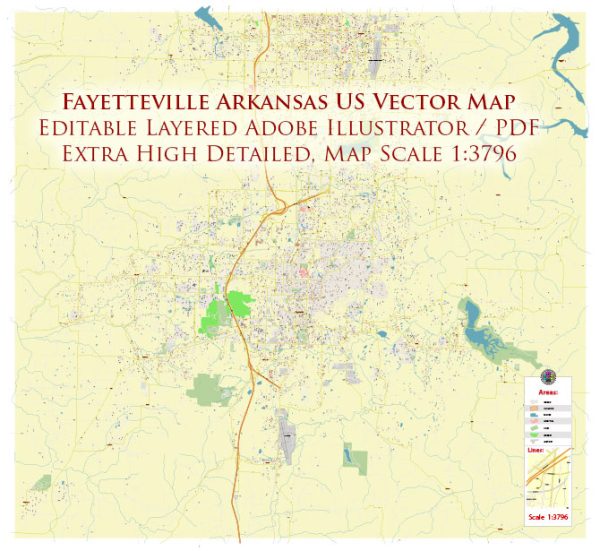Fayetteville, Arkansas, has a rich history of urban development that reflects the broader trends of American expansion, economic shifts, and cultural changes. The city’s development can be traced through various stages:
- Early Settlement and Incorporation:
- Fayetteville was founded in 1828, shortly after the establishment of Washington County in 1827.
- The city’s location in the Ozark Mountains contributed to its early growth, as it served as a hub for trade and transportation.
- Antebellum Period:
- Before the Civil War, Fayetteville experienced economic growth driven by agriculture, particularly cotton farming.
- The construction of the Butterfield Overland Mail route in the late 1850s enhanced the city’s importance as a transportation center.
- Civil War and Reconstruction:
- During the Civil War, Fayetteville witnessed military activity and changed hands multiple times between Confederate and Union forces.
- Reconstruction brought challenges, but the city gradually recovered and developed industries such as timber and mining.
- Late 19th to Early 20th Century:
- The late 19th century saw the expansion of railroads, connecting Fayetteville to regional and national markets.
- The University of Arkansas, founded in 1871, became a significant factor in the city’s growth and development.
- The development of utilities and infrastructure marked this period, as did the establishment of the town square as a focal point for commerce and community activities.
- Mid-20th Century:
- Post-World War II, Fayetteville experienced suburbanization and population growth.
- The growth of the university continued to shape the city, and the subsequent establishment of the Ozark National Forest contributed to the preservation of natural spaces around Fayetteville.
- Late 20th Century to Present:
- Fayetteville has undergone modernization and urban renewal efforts.
- The Walton Arts Center, opened in 1992, became a cultural centerpiece.
- The city’s historic downtown underwent revitalization, preserving its historical character while accommodating contemporary needs.
- Economic Diversification:
- In recent decades, Fayetteville has seen economic diversification beyond traditional sectors, with a growing emphasis on technology, healthcare, and education.
- Population Growth and Urban Planning:
- Population growth and the influx of new residents have led to urban planning challenges and opportunities.
- The city has focused on sustainable development, green spaces, and a mix of housing options to accommodate a diverse population.
- Cultural and Recreational Development:
- Fayetteville’s cultural scene has expanded with various festivals, events, and a burgeoning arts community.
- The city’s commitment to outdoor recreation is reflected in its extensive trail system and parks.
Overall, Fayetteville’s urban development showcases a blend of historical preservation and progressive planning, with a focus on maintaining a vibrant community in the midst of modern growth.


 Author: Kirill Shrayber, Ph.D.
Author: Kirill Shrayber, Ph.D.